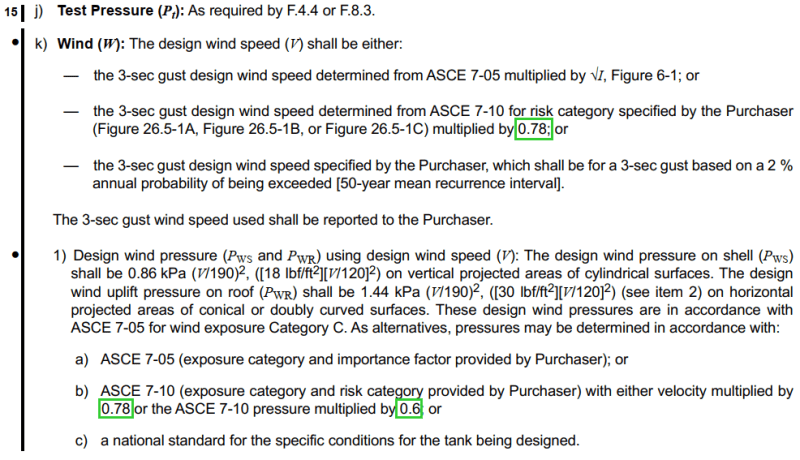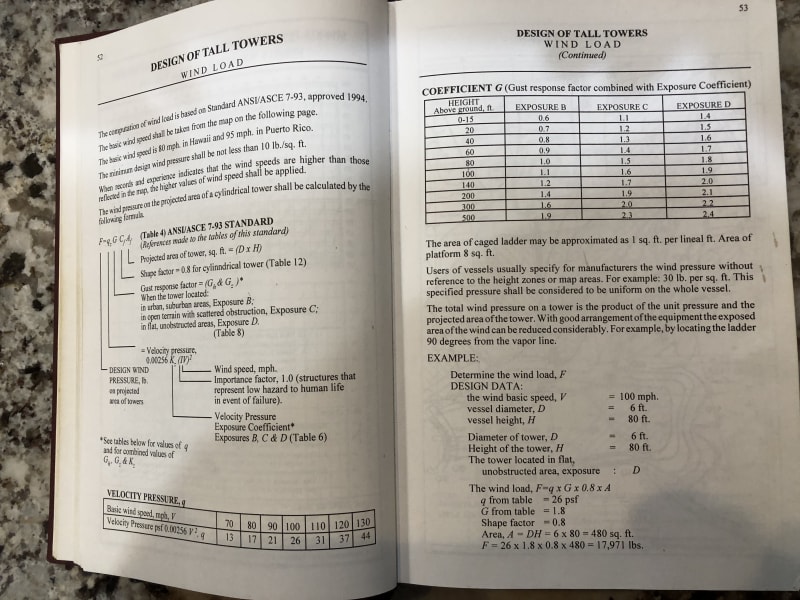In API 650-2016, wind speed is by default determined as per ASCE 7-05.
If ASCE 7-10 is used, wind speed shall be multiplied by 0.8, or wind pressure shall be multiplied by 0.6.

Why?
If ASCE 7-10 is used, is Importance Factor is required or not?
In ASCE 7-10, importance factor is 1, use importance factor from ASCE 7-05?
If ASCE 7-10 is used, wind speed shall be multiplied by 0.8, or wind pressure shall be multiplied by 0.6.

Why?
If ASCE 7-10 is used, is Importance Factor is required or not?
In ASCE 7-10, importance factor is 1, use importance factor from ASCE 7-05?

